A better place for kids to wait
August 22, 2012

A toddler gets a lullaby from a certified nurse assistant at the county's new Child Awaiting Placement Center.
The toddler in the pink shoes had arrived early Sunday, after her single father was taken into custody on a DUI. Social workers called foster home after foster home, but none would take her. One woman agreed, then reneged, saying she couldn’t handle a 21-month-old baby. A grandmother was willing, but her home wasn’t safe.
As precious hours passed, the frustration continued. But there was at least one consolation for the displaced child: For the first time in nearly a decade, tots in her situation had somewhere to wait besides the Department of Children and Family Services command post. When bedtime came, the toddler got a warm bath, a hot meal, a clean crib and a loving shelter in a brand new county center for children awaiting foster care.
Tucked into a corner of the Los Angeles County-USC Medical Center campus, the county’s new Child Awaiting Placement Center has been operating to rave reviews since July 16. The CAP Center can feed, house and care for as many as 15 children up to the age of 10 while DCFS workers canvass for foster homes.
The center opened after reports last year that DCFS was housing children in the department’s Emergency Response Command Post when social workers couldn’t find placements, and downplaying the situation because they feared repercussions from their managers.
Though the command post was created to investigate child abuse allegations on nights and weekends, it has morphed in recent years into a de facto children’s shelter; since the 2003 demise of the troubled MacLaren Children’s Center, the command post is the only DCFS office that never closes.
But the command post—a suite of offices that moved last year from a Wilshire Boulevard high-rise to the downtown L.A. Mart, which houses high-end furniture showrooms—does not have a state license to house children, and by law cannot provide shelter for more than 24 hours.
Earlier this year, county auditors reported that they had seen as many as 10 infants, children and teenagers at a time sleeping at the command post last year. Some older children had histories of violence and severe mental illness, and some babies were sleeping in car seats.
Meanwhile, auditors found, social workers were struggling to find emergency placements; on one night, 11 of 14 foster care facilities called by command post staffers simply let the phone ring; the other three were either filled, closed or had changed their phone numbers.
“We had all these kids coming in,” says DCFS Regional Administrator Frank Ramos. “And we were trying to make sure they were safe in this business office. But at the same time we also had to respond to, say, officers who just did a drug bust and had called to say, ‘We’re at the home, and we need you to come now.’ ”
Enter the CAP Center, which was conceived two years ago by Dr. Astrid Heger, who directs the county’s 24-hour hub for treating victims of child abuse. Housed in a bright, loft-like space that spans a sleeping area, a big playroom, a child-scaled bathroom, a playground and an eat-in kitchen, the center is adjacent to Heger’s clinic.
“It used to be a child care center for employees and patients at the [County-USC] Medical Center before they moved to their new hospital building,” says Heger, adding that after the move, the area reverted to storage space.
Because children who come to the command post are brought to Heger for medical examinations, she says, she saw the need coming. “All the emergency response workers who were coming in here kept saying, ‘Can’t we just leave these kids here? Because the command post isn’t a very good space for them to be in,’ ” she recalls.
Heger’s operation, a multi-disciplinary project known as the Violence Intervention Program, is publicly funded, but also is subsidized by a foundation; deciding that “if we build it, they will come,” she asked one of her private donors, children’s author Cornelia Funke, to help renovate some of the county hub space.
When the Board of Supervisors inevitably demanded action, she says, the space was prepped, thanks to Funke’s $100,000 donation. DCFS kicked in $40,000 for touch-ups, and the founders of Guess? Inc. donated furniture, adds Heger.
The proximity to VIP ensured that medical care and mental health services would be available if needed; the hospital supplied hot meals for the children. Although DCFS officials estimate the center eventually will cost about $2 million to operate with its own staff, the Department of Health Services has for now sent certified nurse assistants to cover the first two months of childcare. DHS leases the space to DCFS at no cost.
Forty-six children arrived during the center’s first week. On the first Saturday night, 14 of its 15 beds were filled. “There were sisters asleep on the couch with their arms around each other, and a teenaged mom with her 2-year-old over there on a futon,” Heger recalls. “It was the way it should be—everybody was sleeping with real pillows and blankets on real furniture.”
As of last week, CAP had sheltered 194 children, and only one—the toddler in the pink shoes—had overstayed the 24-hour limit. Meanwhile at the command post, which for now remains the waiting area of last resort for adolescents, the headcount of waiting children is down by about 40%, to roughly 50 per week.
DCFS Assistant Regional Administrator Maricruz Trevino, who moved from the command post to run the CAP Center, says the new facility is a godsend, but the county’s work is far from finished. From the strained economy to an increased reluctance among foster parents to take babies, she says, a chronic shortage of willing foster homes continues to plague the county.
“This is wonderful,” she says, as she smiles down at the toddler in the pink shoes, who beams back, proffering a little toy bowl of pretend “soup.”
“But the resources in our community have to be gathered. We have to find a place for more of our kids.”

Like the three bears and their porridge, children awaiting foster care now have a setting that is "just right."
Posted 8/21/12
A public life
August 20, 2012
Zev Yaroslavsky, now in his final term as a Los Angeles County Supervisor, has spent nearly four decades in elective office, starting in 1975 on the City Council at the age of 26. Here’s a photo gallery of some memorable moments along the way.
Gushing over L.A.’s new civic park
August 19, 2012

Never heard of Arthur J. Will? That’s about to change.
For decades, a fountain tucked between the Hall of Administration and the courthouse has carried Will’s name, honoring his work in creating the Civic Center Mall during the late 1950s while serving as the county’s chief administrative officer.
But the truth is that, outside of a couple cameo appearances in the movies “Pretty Woman” and “500 Days of Summer,” the Arthur J. Will Memorial Fountain has remained mostly anonymous, its street-level view completely obscured by two concrete parking-lot ramps on Grand Avenue.
Now, the 1960s-era fountain is being spectacularly re-imagined for a starring role in a $56-million transformation of Will’s long overlooked public space, which stretches from the Music Center to City Hall. The parking ramps have been demolished and moved, and the fountain has been restored under the watchful eye of the Los Angeles Conservancy.
In recent days, the fountain has been tested for the first time since it was turned off in July, 2010. Last Monday, a nighttime run-through of the fountain’s stunning new kaleidoscopic hues brought smiles of satisfaction—and relief—to the team responsible for the $5.2 million makeover. (For a front row seat at the testing, take a look at our video, linked above.)
“This is a huge milestone to have this be so successful and so enticing,” said project manager Dawn McDivitt of the county’s Chief Executive Office. “We can’t wait to show it off to the community.”
The fountain, which is now also more energy efficient, will remain closed to the public until late summer or early fall, when all four blocks of the 12-acre park project are completed. Currently called Civic Park, it’s designed to create a sense of place in a downtown on the rise, with a performance lawn, a grand event lawn, ADA-accessible walkways, a dog run and a community terrace area showcasing plants from around the world.
But it’s the fountain—with its new prominence and engaging interactive features—that promises to be one of the park’s biggest draws.
Karen Adhikari of Fluidity Design Consultants, which oversaw the fountain’s restoration and expansion, said the Los Angeles Conservancy required that the existing structure be kept largely intact, most notably the space-age-styled granite and concrete “bowl.” What’s more, material used in the restoration, she said, needed to precisely replicate the original look.
But the conservancy also signed-off on a dramatic modernization: a ¼-inch-deep “membrane pool” with 79 interactive jets and a dark granite bottom that produces crisp reflections of the fountain and surrounding buildings, including the Dorothy Chandler Pavilion. Designers of the 6,200-square-foot pool would like to see visitors of all ages wade in.
“We hope that people will find this a peaceful place, an active place, a place that is constantly changing and never repetitive,” said Adhikari, whose company worked in tandem with the construction firm of Outside the Lines.
For months, wood fences along Grand Avenue concealed from public view the fountain’s sparkling renovation. But last December, that didn’t deter one particularly determined passerby from trying to get a peek. He had reason to be more curious than most. His father was the fountain’s namesake, Arthur J. Will.
Robert Will said he was driving along Grand Avenue with friends after a downtown lunch when he saw the fences and pulled to the curb.
“I got out, jumped up and peered over the fences,” said the 80-year-old Will, a retired Washington D.C. lobbyist. That’s when he says he was approached by security officers, who ordered him to move along.
“I want to look at the fountain,” Will said he responded. “They were very polite but they still said, ‘Get out of there!’ ”
Two weeks ago, pursuing a more conventional route, Will wrote a letter to the county’s current chief executive officer, William T Fujioka, saying that he and his family would like to attend the dedication of the fountain and the new park later this year—a request the CEO’s office says it will be thrilled to honor.
“My dad was so proud of the mall,” said Will. “It was his baby.”

The Arthur J. Will fountain shares the screen with Richared Gere and Julia Roberts in 1990's "Pretty Woman."
Posted 5/1/12
Fed OK gets subway moving
August 16, 2012
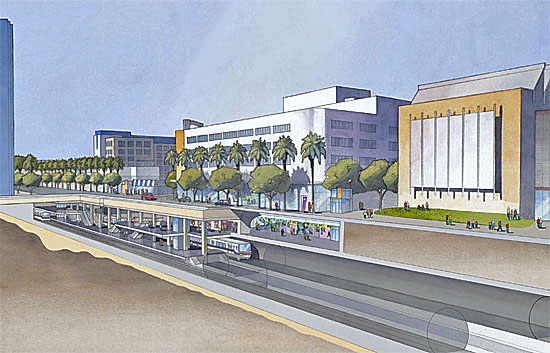
This rendering gives a cutaway view of how the Wilshire/Fairfax subway station by LACMA could look. Illustration/Metro
The Federal Transit Administration has granted a crucial approval to the Westside Subway, ushering in a new era for the project as Metro prepares to seek federal funding and begins advance work on construction.
The FTA’s “record of decision” means that environmental studies for the subway project have met all federal requirements. While most of the money to build the subway will come from Measure R, the voter-approved ½-cent sales tax, constructing the project also will require federal matching funds. The FTA’s environmental approval clears the way for the Metropolitan Transportation Authority to pursue funding under the federal New Starts program.
It also sets the stage for work to begin on a number of other fronts.
In addition to relocating utilities and acquiring property needed to build the project, contractors for Metro soon will begin building an “exploratory shaft” near the La Brea Tar Pits to help the agency evaluate the area’s “unique ground conditions.”
The shaft, to be built on a Los Angeles County Museum of Art parking lot at the southwest corner of Wilshire Boulevard and Ogden Drive, will allow engineers to expand on the data gathered in the environmental review process as they investigate earth pressure and gassy ground conditions in the area. The 40x20x75 foot shaft also is expected to be used to demonstrate safe construction procedures and to help refine construction cost estimates for the project.
The shaft will be built over the course of 13 months, starting this fall, and will remain in place for monitoring through the fall of 2014.
Because the area is rich in fossils, a full-time paleontologist will be on-site to make sure discoveries are properly handled and turned over to the county’s George C. Page Museum.
The Westside Subway Extension will include seven new stations along its 9-mile route, running from the current end point of the Purple Line at Wilshire and Western to the VA Hospital in Westwood.
Construction on the first part of the the line, to Wilshire and La Cienega, is expected to begin in 2014 and conclude by 2020, with the entire project finishing up by 2036 under the current timetable. However, Metro is hoping to accelerate construction of the $5.6 billion project under the America Fast Forward initiative and a proposed extension of Measure R, and to finish the entire route by 2022.
When complete, the subway will make it possible to travel from downtown Los Angeles to the Westwood/UCLA station in 25 minutes.

A paleontologist will be on duty at Metro's "exploratory shaft" near the La Brea Tar Pits in case of fossil finds.
Posted 8/14/12
Expo, Orange Line ridership on a roll
August 16, 2012
Metro’s new transit lines are taking Los Angeles for a ride—in a big way.
The Expo Line, which opened April 28, has seen its ridership rise dramatically over the course of the past three months. The light rail line, which had 320,627 boardings in May, gave passengers 497,449 rides in July—an increase of 55%. Ridership on the line rose across the board—on Saturdays, Sundays and weekdays. Weekday ridership was up more than 60%, with 18,181 boardings last month, compared to 11,347 in May.
The surge is welcome news for the Expo Construction Authority, which built phase one of the project and is now at work on the line’s second and final leg to Santa Monica.
“We fully anticipate that ridership will continue to increase in the fall when school starts again and people realize there is a viable alternative to the congested I-10 freeway,” said Samantha Bricker, Expo’s chief operating officer.
It’s typical for new transit lines to get off to a slow start—but not this time.
“It’s very surprising,” said Metro’s chief operations officer, Frank Alejandro. “The Blue Line [ridership] jumped pretty quickly, but not as quickly as this.”
Part of the increase was spurred by the opening of two new stations—Farmdale and Culver City—in June, after the initial part of the line was already operating. In addition, some bus routes also were reconfigured to make it easier for commuters to transfer to the new line. And, in an unexpected but welcome development, the Daily News reported last month that many San Fernando Valley residents are taking the Red Line to downtown Los Angeles in order to pick up the Expo Line and travel to points west.
One of the newest riders is Hannah Burnham, who was starting a new job at USC as props master for its theater department Thursday and was taking her first ride on Expo to get to work. She had driven from Burbank to North Hollywood, where she picked up the Red Line to the 7th/Metro station and hopped aboard the Expo Line.
“I think it’s going to be great because I do not want to drive from Burbank to down here,” Burnham said. “Plus the pass is less than a parking permit at USC, plus USC will pay almost 40% of your Metro pass per month.”
In the San Fernando Valley, meanwhile, Orange Line ridership also reached new highs. The rapid transit busway, which on June 30 opened a new four-mile northward extension from Warner Center to Chatsworth, posted its best-ever Saturday ridership in July. The total of 16,999 Saturday boardings beats the previous record of 15,629 set in June, 2008.
Metro officials said 12% of the increase was directly attributable to the new extension. The ridership figures include only paid boardings. Thousands more rode for free on the line’s gala opening.
Even before the extension opened, the Orange Line’s ridership was surging. Boardings for the year ending June 30 were the highest ever on the nearly 7-year-old busway. More than 7.8 million trips were taken on the Orange Line; the previous annual record was 7.45 million boardings in 2008.
Of course, the Orange Line has been an overachiever since Day One, beating ridership projections its first month out, in November, 2005.
“Ridership out here in the Valley is tremendous,” said Karla Aleman, assistant transportation operations manager for Metro in the West Valley. “It’s amazing. A lot of people here depend on public transportation.”
Posted 8/16/12
Opie’s old stomping grounds get TLC
August 16, 2012
Opie and Andy fished there. Claudette Colbert flashed some leg there. And now you can lend a hand there.
Franklin Canyon Park, a favorite of Hollywood location scouts and nature-lovers alike, will be getting some sprucing up this Saturday, August 18. And the Mountains Restoration and Conservation Authority and L.A. Works are looking for volunteers to help with the work.
Nestled between Beverly Hills and the San Fernando Valley, the 605-acre park serves an audience of hikers, cyclists, picnickers and nature lovers drawn to its oak woodlands, lake, duck pond, nature center and more than 5 miles of trails.
TV and movie buffs may also recognize the park as the site of the “fishing hole” scenes from The Andy Griffith Show, along with episodes from TV series ranging from NCIS to Star Trek. It also was the setting for Colbert’s famous hitchhiking scene in It Happened One Night.
Volunteers won’t win an Oscar, but they will have a golden opportunity to help out with trail upkeep, invasive plant removal, native plant installation and slope regrading. They’ll also assist with efforts to make the park more accessible to people with disabilities.
If you want to join in, bring some closed-toe shoes, sunblock and work gloves, if you have them. Things get underway at 8 a.m. and wrap up at noon. For more information or to register as a volunteer, visit the online event listing.
Posted 8/15/12
Condom measure heads to the ballot
August 9, 2012

In spite of wide-ranging concerns, a measure to require condoms on porn shoots will go before voters.
An initiative to mandate condom use in adult film production moved this week to the November ballot, despite predictions that it could expose the county to lawsuits and leave taxpayers picking up the tab for some of the program’s costs.
The measure also raises potential free speech questions; compelling filmmakers to put condoms in their movies could be construed as an infringement of the First Amendment.
Acknowledging concerns about the measure, the Board of Supervisors voted to 3-1-1 Tuesday to place it on the ballot, after supporters gathered enough signatures to easily qualify it earlier this month. Supervisor Gloria Molina voted no and Supervisor Mark Ridley-Thomas abstained.
“We’re all in favor of porno stars using condoms,” Molina said, “but the issue is liability for the county.” Molina noted that existing law requires the state, not the counties, to enforce workplace safety, and said that the county already pays out more than $100 million a year in liability claims.
Backed by Los Angeles AIDS activists, the ballot measure would require the county to issue and enforce public health and film permits for porn producers, whose performers would have to use condoms on their sets. Violators could be fined and/or charged with misdemeanors.
The initiative addresses longstanding concerns about unsafe sex in the San Fernando Valley’s burgeoning porn industry, and qualified for the ballot with more than 370,000 signatures.
It has been dogged, however, by concerns about jurisdiction and enforcement. Workplace safety in California is currently regulated by federal and state law and enforced by Cal/OSHA. And most adult films are shot quickly and without permits, often in private homes and garages, which makes it hard to police them.
Those concerns were echoed in reports from the Department of Public Health and County Counsel. The Public Health analysis noted that, unlike, say, catering truck owners, adult film producers rarely disclose their locations in advance, and their competitors rarely know enough about their procedures to notify the county of suspected violations. Thus, even with laws in place, it would be difficult to protect many if not most adult film performers.
Meanwhile, County Counsel John Krattli noted that if the initiative passes, the county would be vulnerable to lawsuits, not only from the measure’s backer, AIDS Healthcare Foundation, which could sue if enforcement fails, but also from the adult industry, whose lawyers confirmed the threat on Tuesday.
“This is an unconstitutional and unwise attempt to fix a nonexistent problem,” said Allan Gelbard, a First Amendment lawyer. “What’s it going to cost the county if you enact it and you are sued and lose? . . . I believe the county would be on the hook.”
Although the measure would require the adult film industry to foot the bill for the enforcement, the Public Health analysis found “significant” startup costs attached to the measure that are unlikely to be covered by the permitting fees built into the initiative because so few adult film producers bother to apply for permits.
Among other things, the report noted, the county would have to set up training programs for producers, create a permitting and review process, maintain an industry database, conduct regular inspections and spot checks, staff a complaint line, assess fines and administer appeals.
The establishment of an Adult Film Public Health Permit Office would cost at least $291,466 a year, not including the costs of confiscation, law enforcement and evidence warehousing, the report said.
“If 10 public health permits were issued, the two-year costs translate into a fee of $58,294 per permit,” the report noted. Even if 50 adult film producers were to apply for permits, the per-permit fee would still be more than $11,000.
Advocates for the measure insisted, however, that it is necessary for porn performers to be ensured of a safe workplace.
Posted 7/24/12
Jail panel gets tough
August 9, 2012
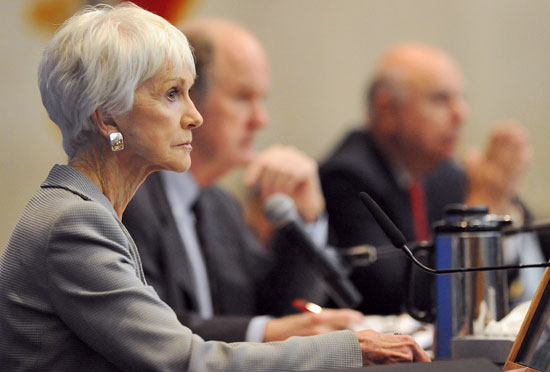
Citizens' Commission on Jail Violence members, from left, Lourdes Baird, Robert Bonner and Dickran Tevrizian.
For nearly three hours, members of the Citizens’ Commission on Jail Violence remained silent as one of the most powerful men in Los Angeles law enforcement defended himself against accusations that he undermined supervision in the county jails and helped create the conditions for a rise in deputy brutality.
Under questioning from one of the blue-ribbon panel’s lawyers, Los Angeles County Undersheriff Paul Tanaka said he and others at the highest levels of the department were “caught by surprise” by the force being used inside Men’s Central Jail. He said lower-ranking supervisors had never alerted them, despite a paper trail of alarming internal reports and contradictory testimony from a former jail commander.
Throughout his morning of long-awaited testimony last week, Tanaka also repeatedly said he could not recall details of key events or conversations, including whether he’d ever talked with the sheriff about use of force issues in the jail. “We may have had discussions,” he said. “I don’t remember.”
When the commission’s lawyer had finished his questioning, it was time for the panel members to weigh in. During hearings over the past several months, their inquiries have mostly been aimed at eliciting more details and context—especially from former and current members of the Sheriff’s Department who’ve testified critically of Tanaka and former jail captain Daniel Cruz.
But this time was different.
This time, with a crowd of uniformed sheriff’s officials in the Board of Supervisors’ hearing room last Friday, several commissioners used their questions to dress down the department and its No. 2 man. Although Sheriff Lee Baca would testify later in the day—admitting that “we screwed up in the past”—he was handled more gently, praised for the aggressive measures he’s taken since last fall to heighten accountability and reduce the use of force in the county’s jam-packed lockup.
Not so with Tanaka, on whom both witnesses and the commission have increasingly focused attention.
“I was astounded when you informed the commission that you were not aware of the magnitude of excessive force issues at Men’s Central Jail,” said Dickran Tevrizian, a former Reagan appointee to the federal bench. “It seems to me that…everybody buried their head in the sand with regard to this issue. So it’s very hard for a rational person to understand this.”
“I can’t argue with you,” said Tanaka, who remained largely conciliatory.
Tevrizian also said that after his appointment to the commission, he’d received numerous anonymous allegations from within the department claiming that favoritism is shown towards those considered to be “one of Tanaka’s guys.”
The undersheriff dismissed that contention. “There are people that maybe don’t get to where they believe they should and I’m an easy target,” he said. “I understand that. It’s my position.”
The Rev. Cecil L “Chip” Murray, former pastor of the First AME Church, asked Tanaka: “I wonder if there is any portion of you that might say on the record: ‘I was not always diligent in my performance and the responsibility rests, to a large extent, on me and with me.’”
Tanaka, who oversaw the custody division as an assistant sheriff between January, 2005, and June, 2007, agreed that if he had been “100 percent diligent and looked into every possible aspect of our operation, we wouldn’t be here today.”
Former California State Supreme Court Judge Carlos R. Moreno said he was particularly concerned by revelations that large numbers of uncompleted use of force reports were stuck in drawers or never forwarded to the command staff. This failure, he said, could mean that a deputy’s personnel history might be worse than represented to plaintiffs during the discovery process in lawsuits.
“Do you have any thoughts about what I would consider to be a fraud having been committed on the courts?” Moreno asked.
Tanaka responded that such lapses, which he said are not occurring today, would be “unacceptable and very disturbing.”
Former U.S. attorney and federal judge Robert C. Bonner, meanwhile, questioned Tanaka about the potential impact of openly stating his dislike for the department’s internal affairs bureau—statements Tanaka insists have been aimed at the bureau’s lengthy and sometimes “less than respectful” investigative process, not its vital function within the department.
“What message is sent when a senior manager of a law enforcement agency like yours belittles I.A. in front of line deputies?” Bonner asked. “Well, it’s the wrong message, isn’t it, Mr. Tanaka?”
“It can certainly be construed as the wrong message, and I hear you loud and clear,” Tanaka responded, adding: “I don’t make it a practice of going around and offering negative comments about the internal affairs bureau today.”
“Well that’s gratifying to hear,” Bonner said.
Some of Bonner’s most detailed and barbed questioning centered on a plan Tanaka spiked in 2006 that would have required deputies to begin rotating between different floors in the Men’s Central Jail in downtown Los Angeles. The jail’s captain at the time, John Clark, was concerned about the formation of deputy cliques and unnecessary use of force. His plan had been approved by the jail commander and the chief of custody operations.
Just days after Clark’s plan was circulated, Tanaka said he was inundated with some 200 e-mails, many of them identical, from deputies complaining that proposed changes were unfair to those “who’ve worked years to obtain a certain spot.” Tanaka told the commission that the letters were “a signal of distress.”
In a controversial move that was the subject of earlier commission testimony, Tanaka met privately with the deputies and told them he was rescinding Captain Clark’s plan. Bonner said this action, taken without consulting Clark, “undercut” and “undermined” a captain attempting to tackle serious problems in the jail.
“I don’t consider anything that I’ve ever done in this role or any other as undermining the command of anybody,” Tanaka said. “The only thing I’ve ever done is in the best interest of this organization.”
But as Bonner noted, Tanaka was not even familiar with details of the plan he dumped. The undersheriff testified that he thought the rotation plan called for a change in shifts, requiring deputies to work new hours, potentially creating problems in their personal lives. Clark’s plan called only for a change in work locations.
“And you were wrong, weren’t you? Because it [the rotation plan] didn’t include shift changes,” Bonner said. “You know that now, don’t you?”
“Based on the written documents,” Tanaka responded, “it certainly contradicts what I remember.”
Baca, during his testimony, came to the defense of his undersheriff, calling him “uniquely qualified for this position.” Baca said that Tanaka’s background as a certified public accountant has helped the department navigate its huge budgetary challenges.
“What’s problematic here is that everyone’s to blame and I’ll take the blame for everyone because of my position as the sheriff,” Baca said, but added: “The chain of command, in many respects, let me down.”
Although the commission’s general counsel, Richard Drooyan, tried to get Baca to describe how he would hold those in his command structure accountable, the sheriff wasn’t biting.
“This commission is a great commission, Mr. Drooyan, but you’re not going to tell me how to discipline my people,” Baca said. “I don’t do that in public and I’m not going to do it now.”
Baca also said he hopes the commission will focus its recommendations on ways to improve the organization. “Let me deal with the some of the souls that you might think are a little off base,” the sheriff said. “I can deal with them.”
The commission, created by the Los Angeles County Board of Supervisors last October, will convene again on Friday and is expected to issue a final report in September.
Photos by Scott Harms/Los Angeles County
Posted 8/2/12
Paging all healthcare pros
August 9, 2012
If you’ve got the skills, L.A. County wants you to be part of The Surge.
A new advertising campaign is being launched to expand the ranks of the county’s network of volunteer healthcare professionals who help out when major disasters or public health emergencies strike.
“No matter what happens with a disaster, there are always issues with medical needs,” said Cathy Chidester, director of the county Emergency Medical Services Agency. “Right now our hospitals are really maxed out, so, in case of a large-scale disaster, you are going to need extra professionals to staff those needs.”
Electronic billboard space valued at up to $250,000 recently was donated to the Los Angeles County Disaster Healthcare Volunteers, a collaborative effort led by the county’s Emergency Medical Services Agency and Department of Public Health, by outdoor communications companies, through a partnership with the City of Los Angeles. The donation was approved by the county Board of Supervisors on Tuesday.
One of the new billboard ads will recruit for the L.A. County Surge Unit, the largest of four volunteer groups under the “Disaster Healthcare Volunteers” umbrella. Another will spread the word about the Medical Reserve Corps of Los Angeles—a volunteer unit associated with the Los Angeles Department of Public Health. A third ad will be reserved for recruiting when a major disaster already has occurred.
The county volunteer collaborative was founded after the 9/11 attacks and Hurricane Katrina increased awareness of a need for backup healthcare personnel. Volunteers pre-register as professionals by entering their information into a database managed by the State of California. Their licensure and place of practice are verified by the program, and they are then considered “hospital ready.”
The Surge Unit seeks a variety of healthcare professionals, including doctors, nurses, dentists, pharmacists, EMTs and lab technicians. The unit is not aimed at recruiting first responders; rather, it seeks people to serve during the days following a large-scale disaster, when they would be contacted and mobilized to increase the capacity of hospitals and clinics.
Licensed mental health professionals are also vital to the effort, said Sandra Shields, Senior Disaster Services Analyst for the unit.
“Following a disaster, we expect a surge in people coming to the hospital concerned that they may be ill or have an injury, but are not actually hurt,” said Shields. Mental health professionals “can help manage the psychological casualties of major disasters.”
For more information about the Surge Unit or to register to help, visit the website or call (818) 908-5150. The unit also offers training sessions several times per year. The sessions are voluntary, as are all other aspects of the program. The personal information of volunteers is secured and can only be accessed by official representatives of the group.
The Surge Unit currently boasts 3,027 volunteers. With the help of the billboards, the program hopes to reach 4,000 by the end of the year. If you think you may want to help out during a disaster, signing up in advance is critical.
“The hospitals and clinics cannot effectively utilize spontaneous volunteers,” Shields said. “We want to use their skills appropriately and that’s easier if they are pre-registered.”
Posted 8/9/12






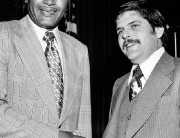
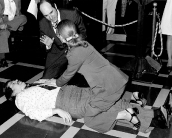
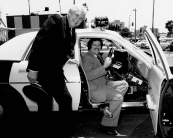

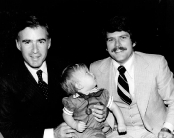
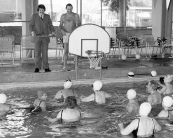
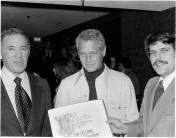


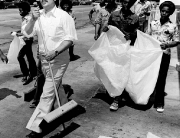
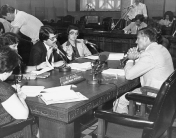
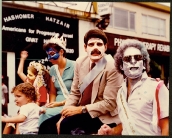
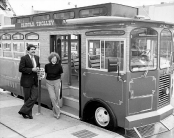

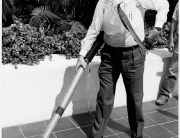


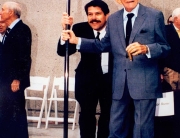

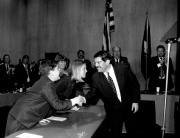
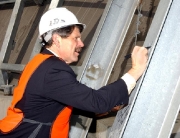


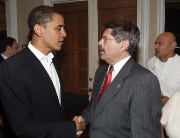
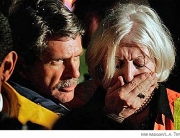
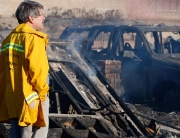
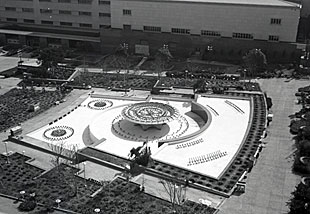

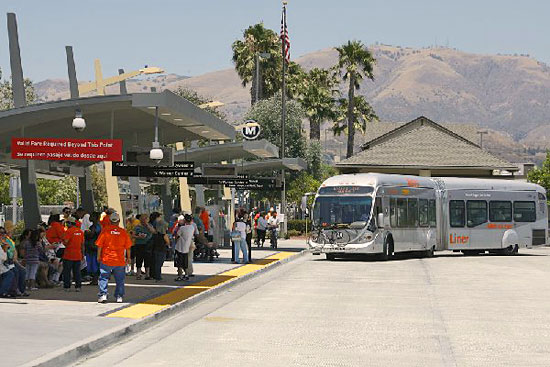


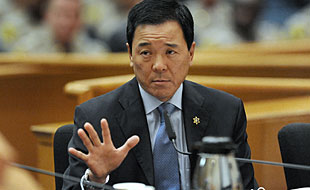
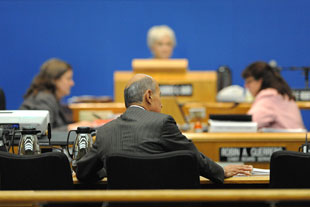
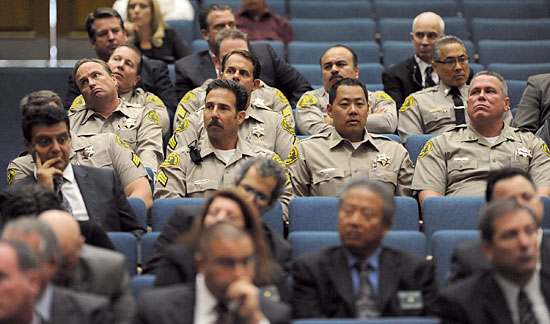
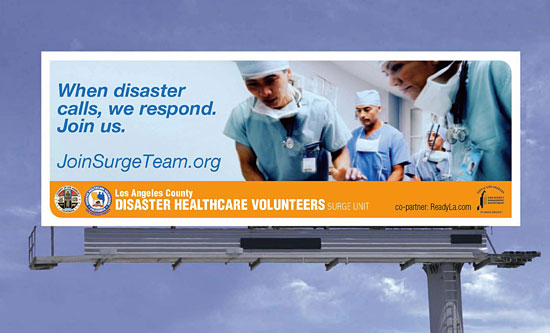





 Check for the latest closure information
Check for the latest closure information








